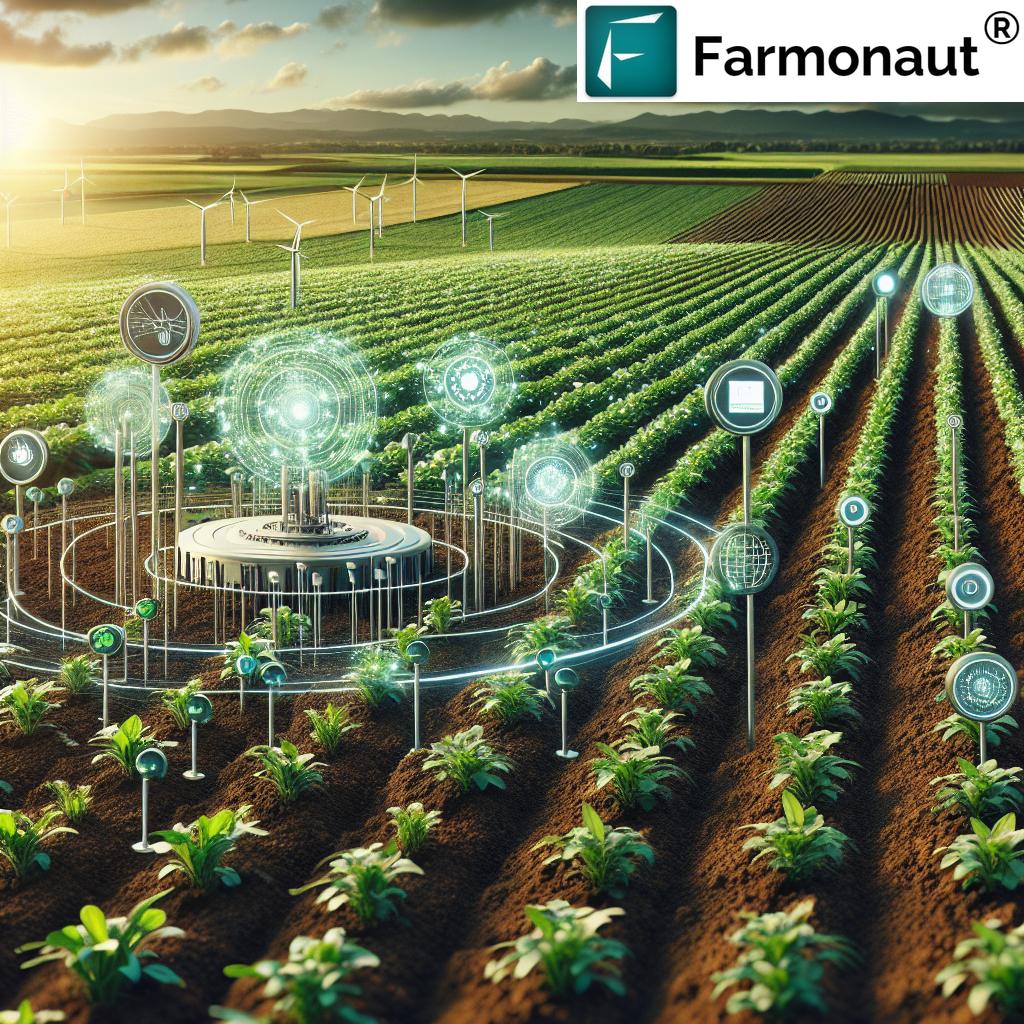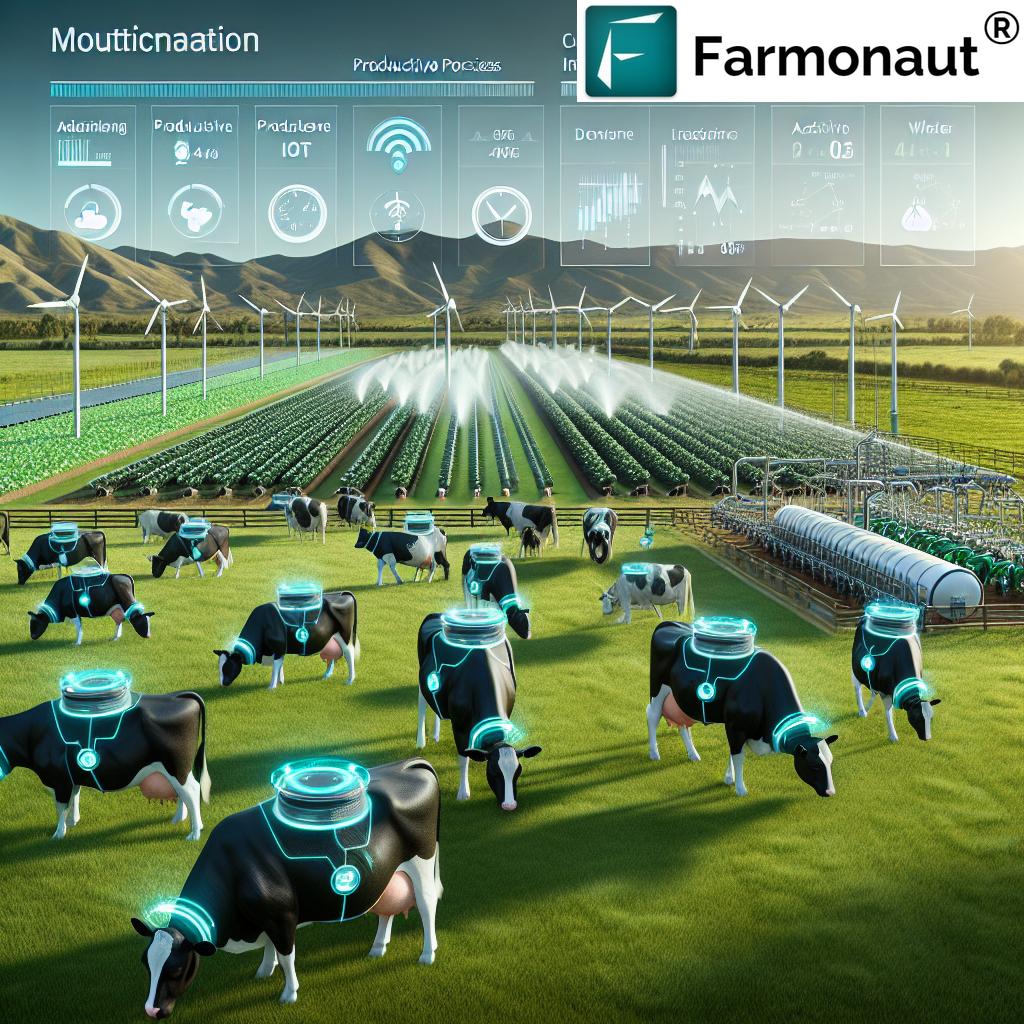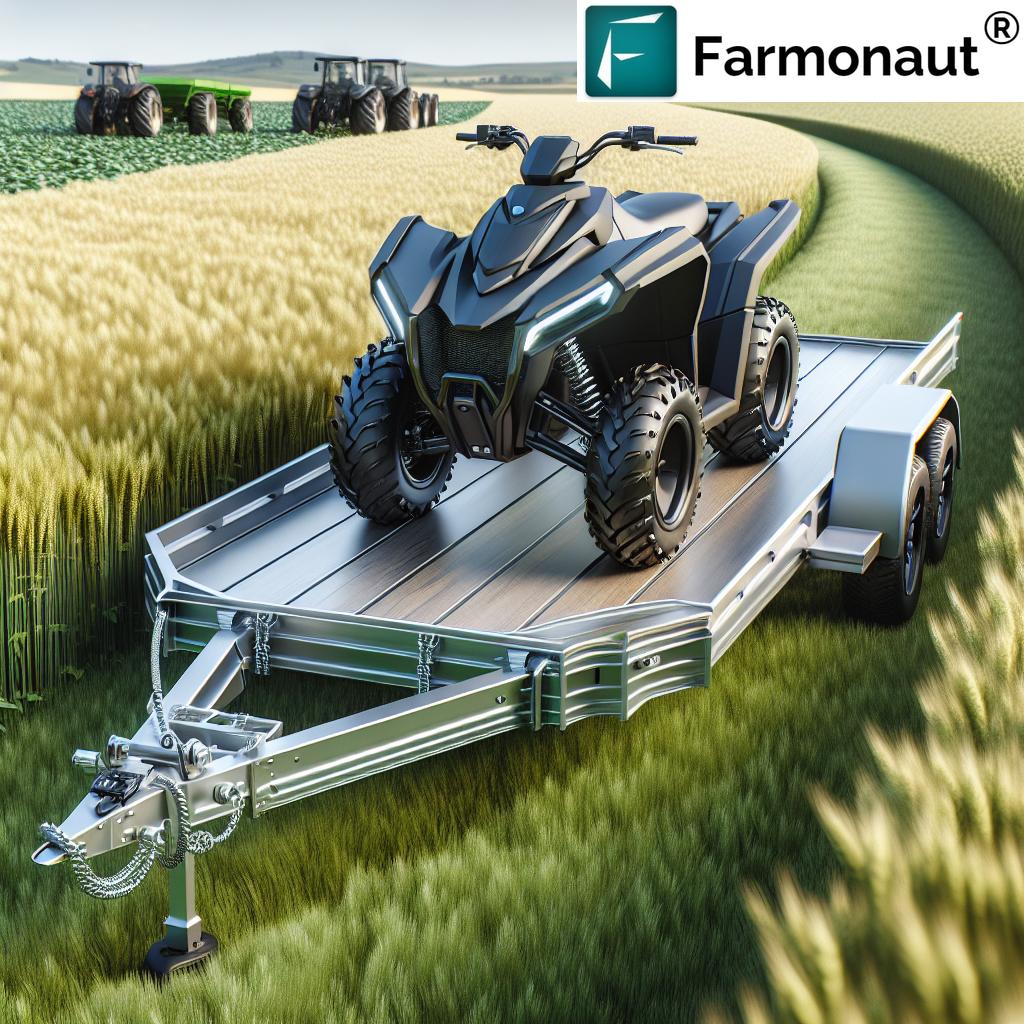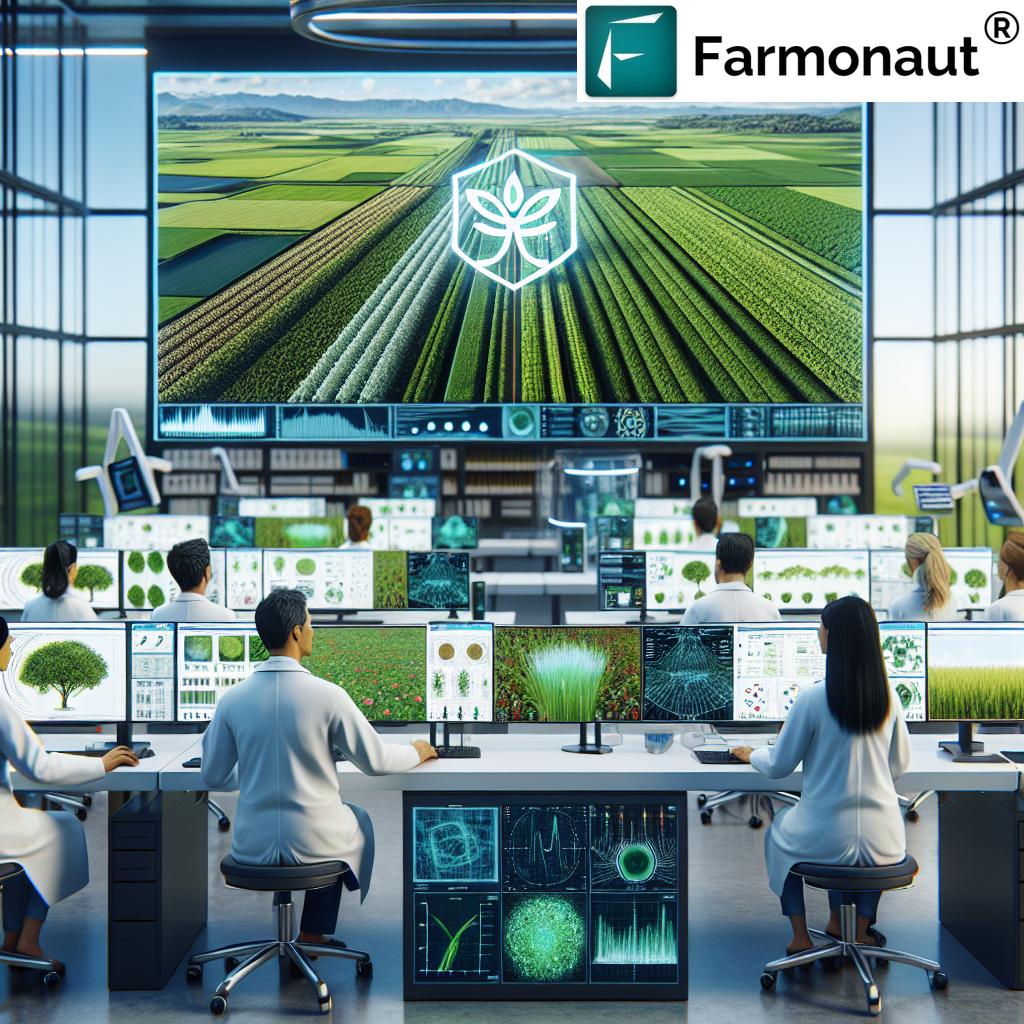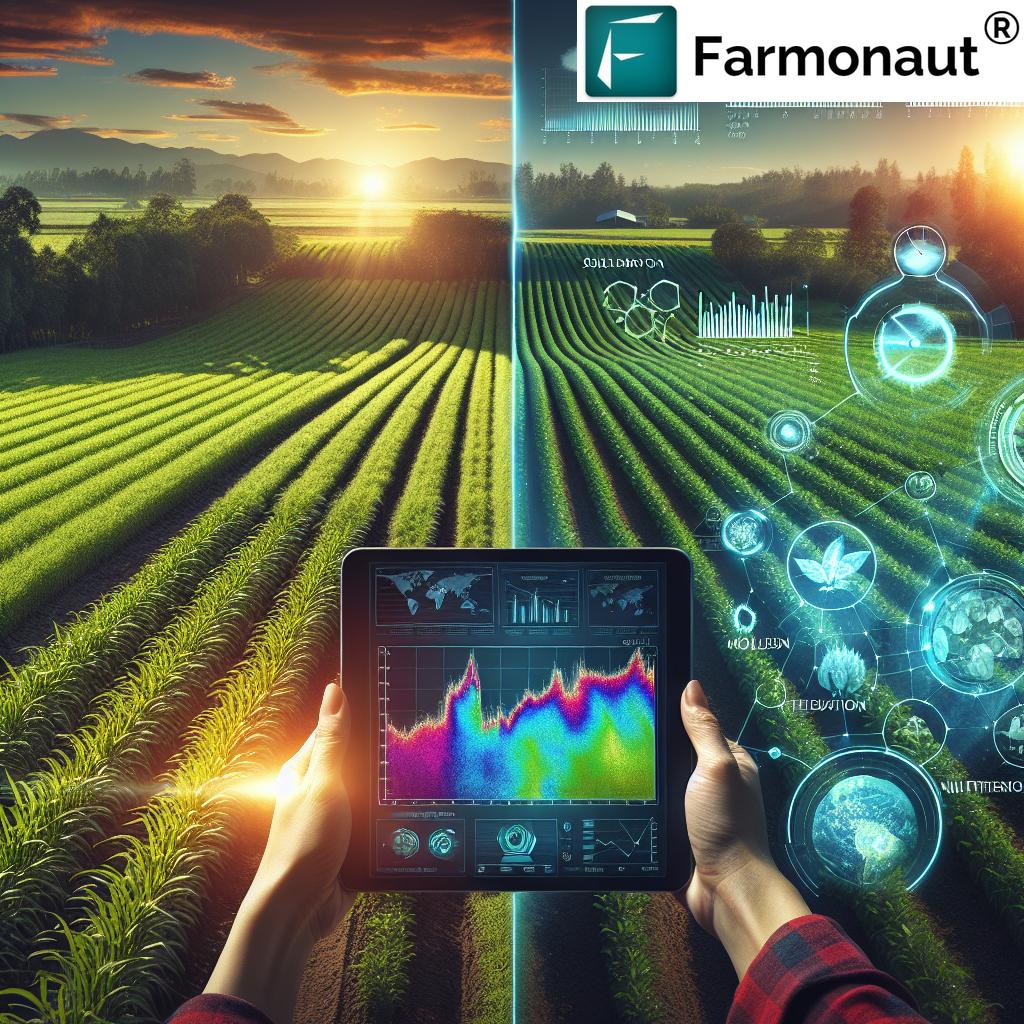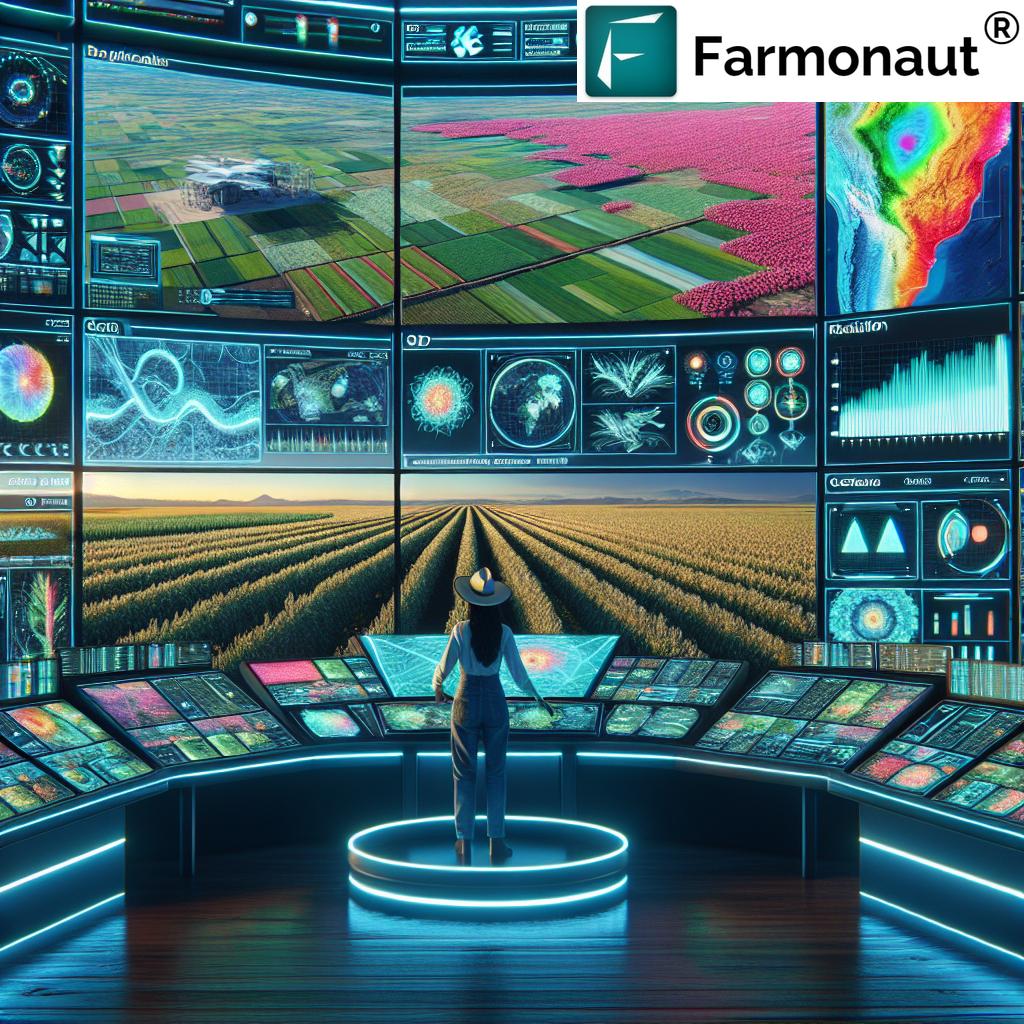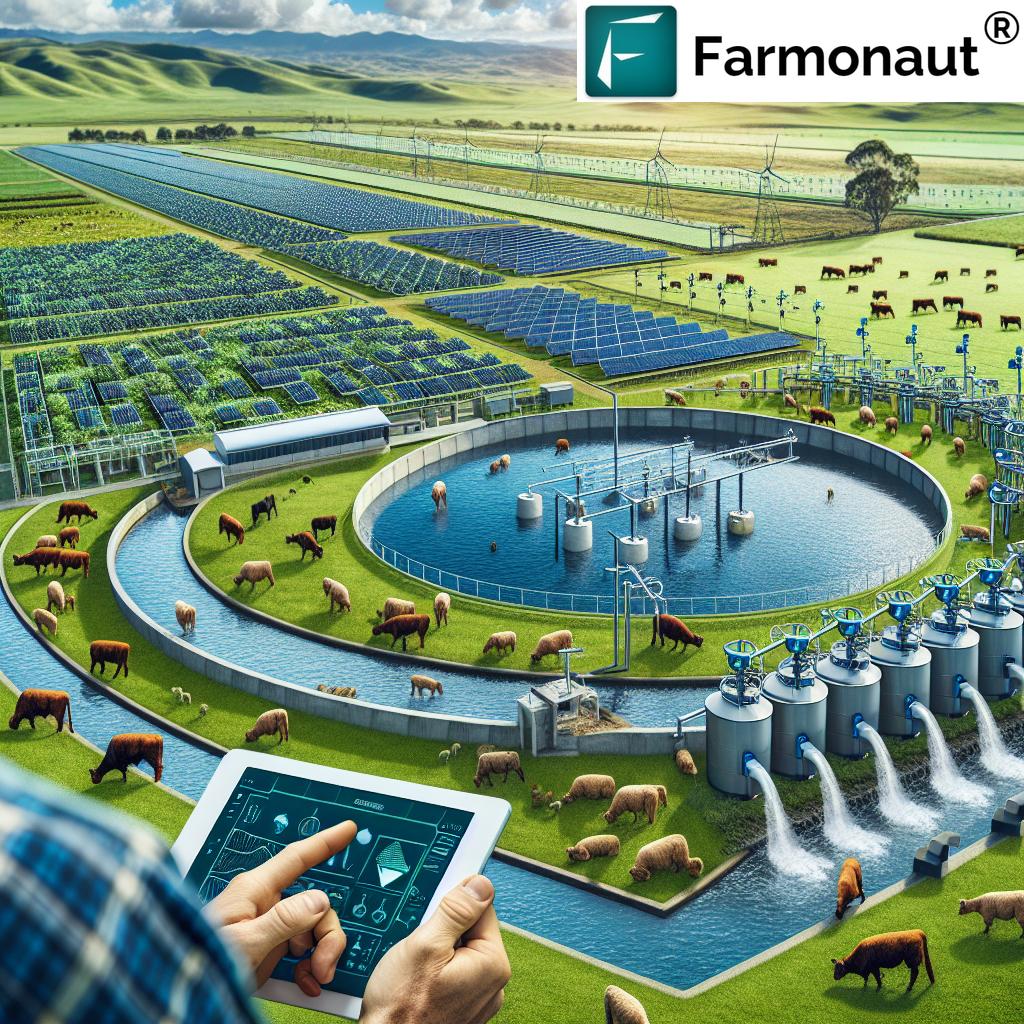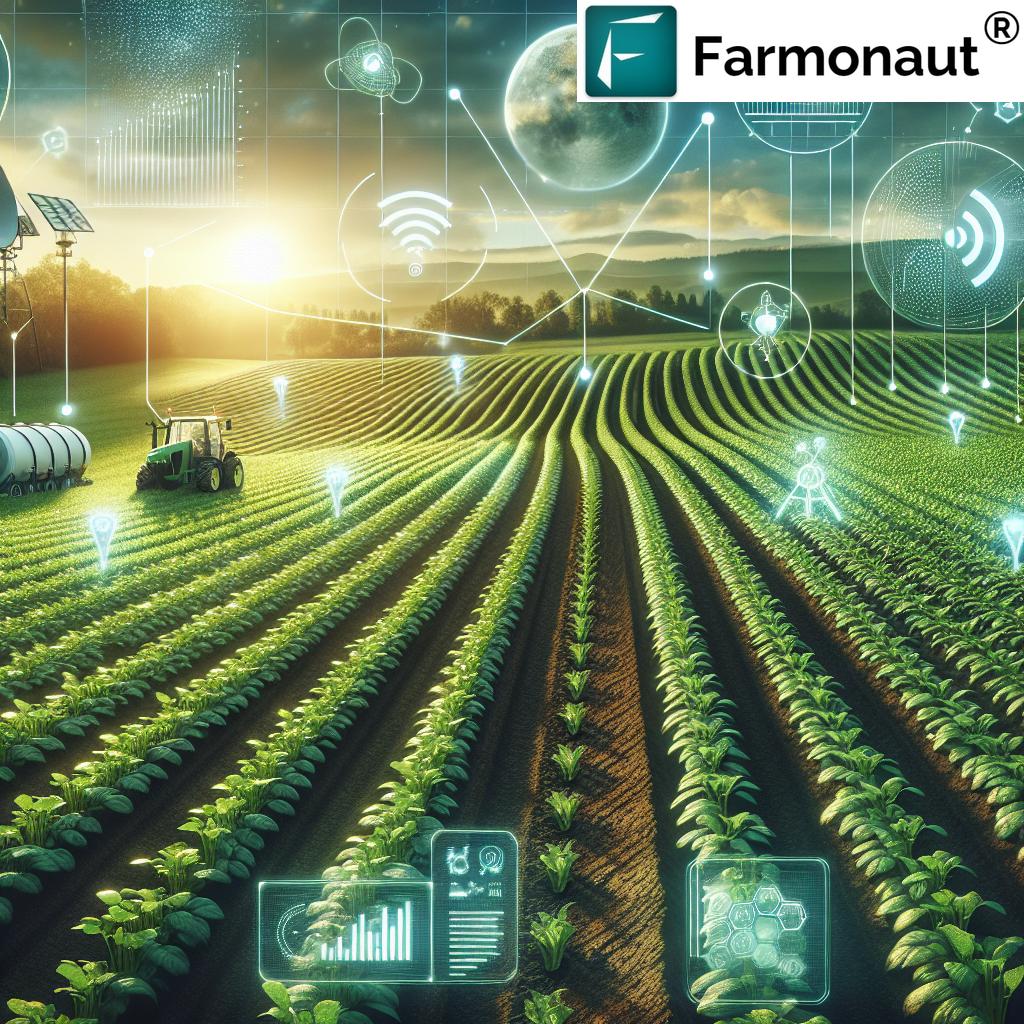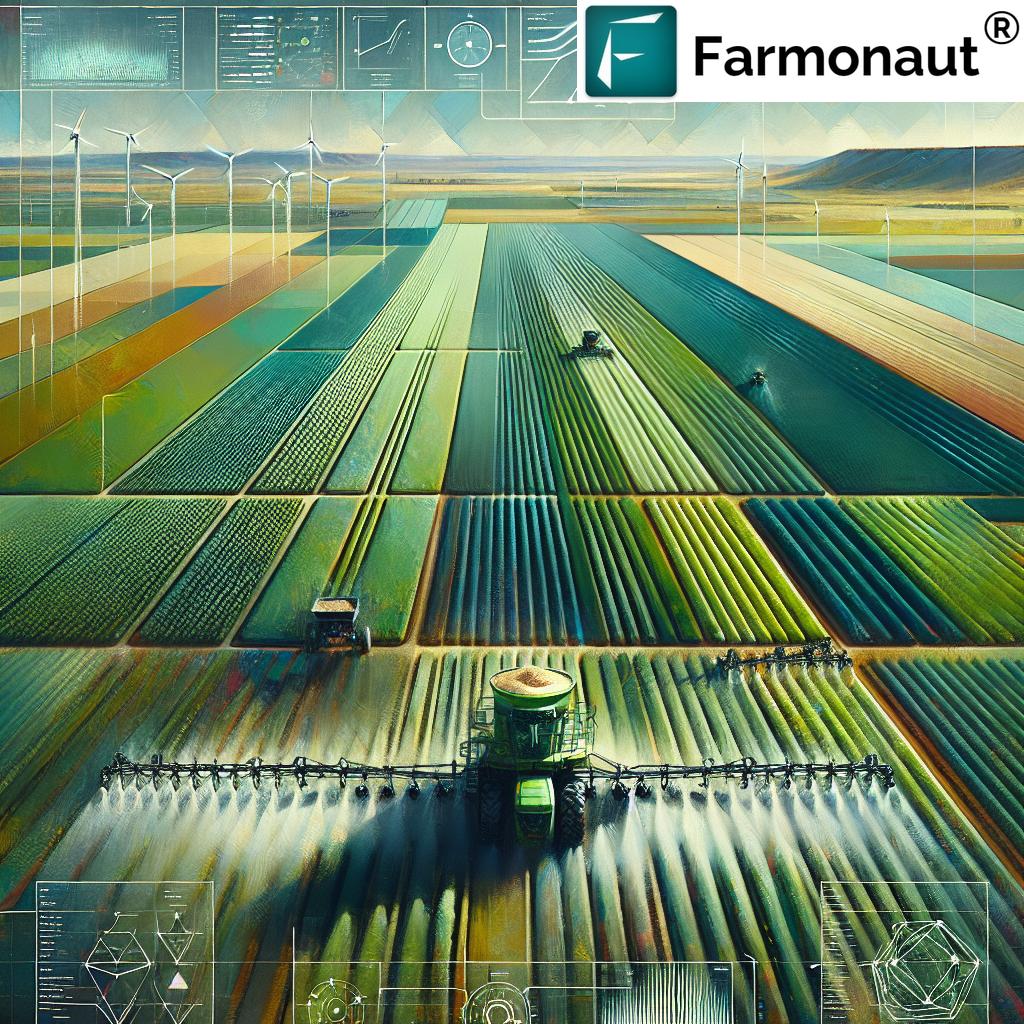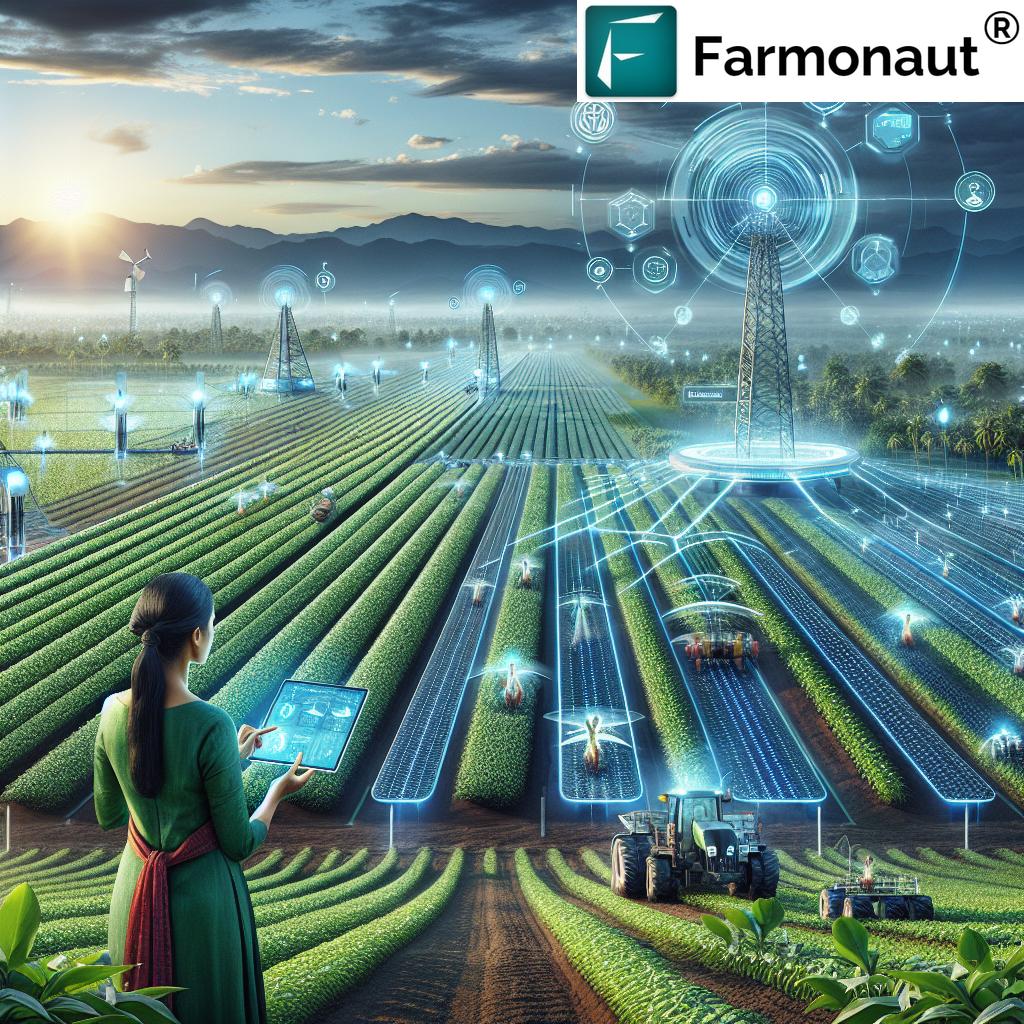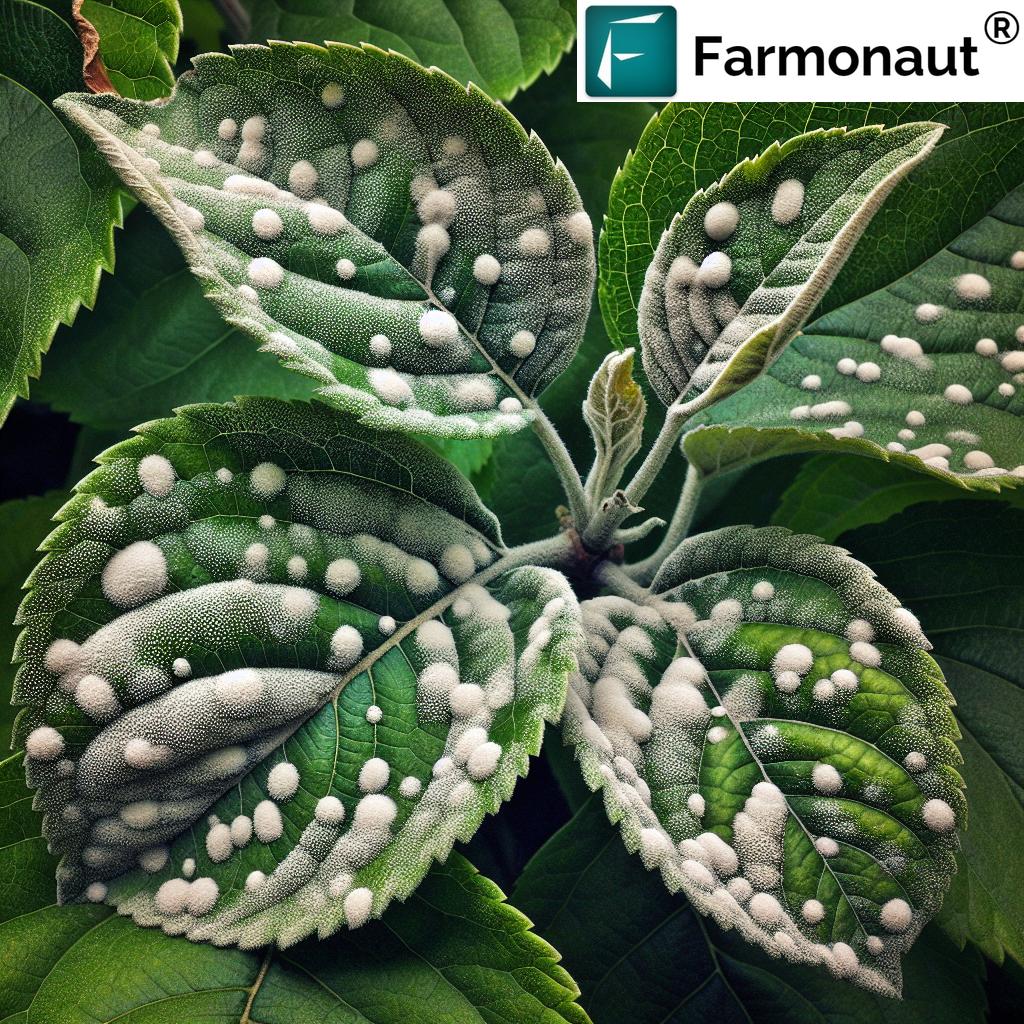7 Shocking Smart Agriculture Using IoT Hacks for Massive Yields
Table of Contents
- Introduction: The IoT Revolution in Agriculture
- Trivia: Smart Farms & IoT
- What Is IoT in Agriculture? Understanding the Basics
- 7 Shocking IoT Hacks Transforming Agriculture
- Comparison Table of IoT Hacks and Yield Improvements
- Top Applications of IoT in Agriculture
- Key Benefits of Smart Farming Solutions
- Challenges & Considerations for IoT in Agriculture
- How Farmonaut Empowers IoT-Driven Agriculture
- Try Farmonaut Solutions – Get Started Now!
- Frequently Asked Questions about IoT in Agriculture
- The Future of Smart Agriculture Solutions
- Conclusion: Embrace the Technological Leap
Introduction: The IoT Revolution in Agriculture
The integration of the Internet of Things (IoT) in agriculture is radically transforming how we manage farms, grow crops, and sustain resources. At its core, IoT connects a sophisticated network of devices, sensors, and systems that collect, transmit, and analyze data from our fields, livestock, and equipment. With these smart farming solutions and precision agriculture technologies, we’re not just talking about incremental improvements; we’re entering a new era where massive yields, supreme efficiency, and true sustainability are achievable for farms everywhere.
We will uncover seven shocking yet practical IoT hacks in this comprehensive guide. Each of these solutions can revolutionize farm management, provide actionable insights, and help us optimize agricultural operations—be it for small-scale farmers or large agribusinesses. Let’s unlock how data-driven decisions made possible by IoT in agriculture are boosting productivity, reducing resource wastage, and making our agro-ecosystem resilient for the future.
What Is IoT in Agriculture? Understanding the Basics
Let’s begin by grasping what IoT in agriculture truly means.
Internet of Things (IoT) in agriculture refers to the integration of smart, connected devices that continuously monitor environmental conditions, crop health, soil properties, and livestock. These devices—including soil moisture sensors, climate stations, drones, GPS trackers, and more—are all part of an interconnected network that feeds real-time data to centralized systems for advanced analytics.
This network isn’t limited by the size of a farm. IoT equips smallholder farmers, agribusinesses, and government agencies alike with intuitive farm management systems for real-time decision-making and operational optimization.
Key Features of Agricultural IoT Devices:
- Remote Monitoring: Track vital farm metrics from anywhere with real-time data delivery.
- Automation: Enable smart irrigation systems or climate control based on sensor data.
- Predictive Analytics: Use AI and machine learning to forecast yields, disease risks, and input needs.
- Resource Optimization: Reduce water, fertilizer, and pesticide wastage through precise application.
“Precision agriculture technologies can increase crop yields by up to 30% through real-time data-driven decisions.”
7 Shocking IoT Hacks Transforming Agriculture for Massive Yields
Through years of innovation and data-backed solutions, we’ve observed seven core IoT applications in agriculture that stand out as hacks—delivering not just incremental but exponential improvements in efficiency and crop productivity.
-
1. Crop Monitoring and Management (Precision Crop Monitoring & Analytics)
Using agricultural IoT devices like soil moisture sensors, temperature and humidity stations, and satellite imagery platforms, farmers now monitor every inch of their fields in real time. These advanced systems support early disease detection, targeted interventions, and precise crop management decisions.
- Why It’s Shocking: Problems like hidden stress, nutrient deficiencies, or early-stage diseases can be detected weeks before visible symptoms, allowing for timely, cost-effective interventions.
- Game-changer: With continuous data flow, adjusting irrigation and fertilization schedules becomes automatic and data-driven, directly translating to improved crop yields.
Farmonaut’s real-time crop health monitoring tools provide NDVI and AI-powered crop insights for affordable and scalable farming management.
-
2. Smart Irrigation Systems (Water Conservation at Scale)
Traditional irrigation methods often result in overwatering and significant resource wastage. IoT-enabled smart irrigation systems leverage detailed sensor data and weather forecasts, dynamically automating water delivery to crops only when and where needed.
- Why It’s Shocking: These systems can reduce water consumption by up to 50%, helping us conserve precious water resources.
- Result: Highly targeted, scheduled watering means optimal soil moisture for plant growth, reduced costs, and sustained yields even under drought or changing climate conditions.
Integrating soil moisture sensors—similar to those supported within the Farmonaut platform—empowers everyone from individual farmers to governments to optimize large-scale water management.
-
3. Livestock Monitoring Technology (Animal Health for Productivity)
Wearable IoT sensors enable continuous measurement of livestock health indicators such as temperature, heart rate, movement, and even feeding activity. This approach offers animal welfare benefits and leads to better planning of feeding schedules and breeding operations.
- Why It’s Shocking: Early disease detection can drastically reduce losses and ensure each animal reaches its full productivity potential.
- Innovation: Combining GPS tracking with biometric sensors optimizes grazing patterns, enhances animal safety, and supports efficient pasture rotation.
Farmonaut’s suite of resource management tools can support data-driven livestock farm management at scale.
-
4. IoT for Pest and Disease Control (Minimize Losses, Maximize Precision)
IoT technologies use a blend of environmental sensors (temperature, humidity, leaf wetness), satellite data, and sometimes drone imagery to detect pest and disease hotspots before outbreaks become widespread. This supports targeted, minimal-chemical intervention.
- Why It’s Shocking: Precision applications of pesticides/fungicides can reduce agrochemical usage by up to 40%, minimizing environmental impact and regulatory risks.
- Bonus: Saves money, leads to healthier crops, and supports sustainable farming practices.
The Farmonaut Jeevn AI advisory system can help analyze environmental data for custom pest control advice.
-
5. Climate Condition Monitoring (Weather-Driven Decisions)
Live weather stations & sensors track temperature, humidity, rainfall, and wind speed—feeding into predictive analytics that optimize planting, harvesting, and yield forecasting. Managing around changing climate factors has never been easier.
- Why It’s Shocking: Avoid crop loss from unpredictable weather by using real-time and forecast data to schedule all time-sensitive farm activities.
- Farmonaut Edge: The Farmonaut Crop Plantation & Forest Advisory leverages satellite and weather data for risk-reduced planning.
-
6. Greenhouse Automation (Controlled Environment, Maximum Output)
Greenhouse farming is taking a quantum leap with IoT-driven automated regulation of temperature, humidity, light, and CO2. These systems create optimal conditions for crops 24/7, regardless of external climate threats.
- Why It’s Shocking: Consistent, high-quality yields are possible—year-round—with reduced manual labor and resource wastage.
- Big Plus: Slash costs and improve outcomes even for specialty/high-value crops.
Continuous greenhouse monitoring via satellite data and API integrations can aid even big agribusinesses to scale up controlled-environment efficiency.
-
7. Supply Chain Optimization (Blockchain for Food Transparency & Less Waste)
IoT and blockchain synergize to track every product journey step—from farm-field to consumer shelf. RFID tags, GPS trackers, and supply chain automation reduce spoilage, ensure product freshness, and improve trust.
- Why It’s Shocking: Food loss in logistics is slashed by up to 15%—directly benefiting both producers and consumers.
- Farmonaut Innovation: With blockchain-based product traceability, businesses in textiles/food can verify source and safely meet regulatory requirements while supporting consumer confidence.
Comparison Table of IoT Hacks and Yield Improvements
| IoT Hack | How It Works | Estimated Yield Increase (%) | Efficiency Improvement (%) | Sustainability Impact (Water/Inputs Saved %) |
|---|---|---|---|---|
| Crop Monitoring and Management | Satellites & sensors provide real-time crop/soil analytics for targeted interventions. | 10–20% | 25–35% | Reduces fertilizer/pesticide use (15–20%) |
| Smart Irrigation Systems | Automation delivers water based on real-time soil & climate conditions. | 12–18% | 30–40% | Saves 30–50% water |
| Livestock Monitoring Technology | Wearable sensors monitor health, detect disease early, optimize feeding. | 8–15% | 20–28% | Reduces losses, improves animal welfare |
| Pest & Disease Control | Sensors, drones, analytics identify infestations/diseases for precise control. | 10–16% | 22–30% | Cuts pesticide use 25–40% |
| Climate Condition Monitoring | Sensors record weather/climate for informed planting/harvesting schedules. | 8–12% | 15–20% | Minimizes risk of weather-related loss |
| Greenhouse Automation | Automates climate, light, and nutrients for year-long optimal growth. | 15–22% | 40–55% | Conserves resources, maximizes yield per m² |
| Supply Chain Optimization | IoT + Blockchain enable real-time tracking & traceability, reducing waste. | 6–10% | 15–18% | Decreases spoilage/loss by up to 15% |
Top Applications of IoT in Agriculture for Smart Farming Solutions
Our exploration of the most powerful applications of IoT in agriculture reveals several core areas where efficiency, precision, and sustainability converge:
- 1. Crop Monitoring and Analytics: Data-driven decision making for nutrient, water, and disease needs. Early problem detection saves crops and optimizes inputs.
- 2. Smart Irrigation Systems: Conserve water, automate delivery, and base schedules on real, observed soil moisture levels and crop requirements.
- 3. Livestock Monitoring Technology: Track animal health and prevent disease outbreaks, improving both productivity and animal welfare.
- 4. Pest and Disease Detection/Control: Sensors, satellite data, and predictive analytics deliver timely, targeted protection measures for crops.
- 5. Weather and Climate Monitoring Devices: Plan planting, harvesting, irrigation, and input applications around accurate, up-to-date climate information.
- 6. Greenhouse Automation and Control: Automated regulation for consistent yields and efficient use of light, heat, and nutrients.
- 7. Supply Chain Optimization: Blockchain and RFID devices secure traceability and product quality, reduce spoilage, and optimize logistics.
Embracing even a few of these IoT applications creates significant, measurable improvements for farms of all scales.
Key Benefits of IoT in Agriculture and Smart Farming Solutions
Let’s revisit why IoT in agriculture is the backbone of a higher-yield, sustainable farming future:
- Increased Efficiency and Productivity:
Real-time monitoring enables precision crop management, resulting in higher yields, less waste, and reduced labor. - Cost Reduction:
Automation and smart inputs in irrigation, fertilization, and pest/disease control keep expenses in check by adapting to actual data and needs. - Sustainability:
By managing resources like water and pesticides more efficiently with IoT devices, we promote sustainable farming practices that protect the environment and our future income. - Improved Decision Making:
Dashboards, analytics, and AI-driven advisories (as seen with the Farmonaut Jeevn AI Advisory System) provide actionable, field-specific recommendations. - Transparency & Trust:
Blockchain traceability ensures buyers and consumers trust the origin and quality of their goods. (Explore Farmonaut product traceability).
Challenges & Considerations in Implementing IoT in Agriculture
While the benefits of IoT and smart agriculture are substantial, certain challenges remain. Understanding these issues helps us plan effective adoption strategies:
- Data Management:
With so much data being collected from the field, robust storage, analysis, and user-friendly dashboards are essential. - Connectivity Issues:
Many rural regions lack broadband or reliable network infrastructure, which can limit device deployment and real-time operation. - Implementation Costs:
The upfront investment in IoT devices and platforms can be high—but cost-effective solutions like those offered by Farmonaut make precision agriculture accessible even to smaller farms. - Security & Privacy:
Sensitive data must be protected; all IoT platforms should use strong cybersecurity and transparent policies.
Addressing these challenges will ensure more farmers can benefit from the promise of data-driven smart farming solutions.
Want to monitor and reduce your farm’s environmental footprint?
Learn about Farmonaut’s Carbon Footprinting tools—measure emissions and track progress towards sustainability targets. This helps us build a more eco-friendly agricultural future.
Integrate Farmonaut’s satellite and weather data into your own systems!
Access the Farmonaut API or explore the API Developer Documentation for custom IoT integrations and analytics.
How Farmonaut Empowers IoT-Driven Agriculture: Innovative Technologies & Unmatched Value
Farmonaut stands at the forefront of the smart agriculture movement, offering advanced, affordable, and accessible solutions for precision agriculture and farm management worldwide. By integrating satellite imagery, artificial intelligence, blockchain, and user-friendly platforms, we empower individual farmers, agribusinesses, and government agencies to take full control of their agricultural operations.
Farmonaut’s Technologies at a Glance:
- Satellite-Based Crop Health Monitoring:
Multispectral imagery (e.g., NDVI, moisture levels) delivers field-level insights for optimal resource use, directly supporting higher yields with less input waste. - Jeevn AI Advisory System:
Intelligent, real-time recommendations for crop scheduling, irrigation, pest & disease management, and weather planning—customized for your field’s unique data profile. - Blockchain-Based Traceability:
Provide tamper-proof records for product origin and journey with traceability solutions—essential for food, textile, and high-value supply chains. - Fleet and Resource Management:
Manage field equipment, monitor fuel usage, and track deliveries to drive down costs and improve safety/compliance (see Fleet Management solutions). - Carbon Footprinting:
Track emissions, monitor resource use, and easily report on sustainability targets with Farmonaut Carbon Footprinting.
Affordable, Scalable, and Globally Accessible:
Farmonaut is unique in making precision agriculture technologies available to every farmer, regardless of farm size or geography. By utilizing satellite data (no costly on-field hardware required), our subscriptions fit every budget and scale—from smallholder to nation-wide agricultural operations.
Leverage Farmonaut for individual farm monitoring, large-scale plantation administration, NGO/government programs, or agribusiness logistics and traceability.
- Small & medium-sized farms: Affordable insights for optimized yield and resource management.
- Large agribusiness: Automate vast field oversight, coordinate fleets, and track outputs.
- Government & NGOs: Monitor crop health, ecological impact, and subsidy programs at scale.
- Corporate supply chains: Blockchain traceability for consumer trust and regulatory compliance.
Farmonaut’s Unique Value Proposition:
- Cost-effective, hardware-light approach (satellite imagery)
- Actionable insights for any location, any size
- Scalable platform — individual farm to corporate supply chain
- User-friendly app, browser, and API access
Explore Farmonaut Smart Agriculture Subscriptions
Frequently Asked Questions about IoT in Agriculture
Q1: What is the role of IoT in modern agriculture?
IoT devices collect and analyze farm data on soil, weather, livestock, and equipment, enabling farmers to optimize inputs, detect issues early, and boost yields.
Q2: How can IoT applications improve resource efficiency on my farm?
Through automated irrigation, targeted fertilization, and real-time monitoring, IoT in agriculture minimizes water and fertilizer wastage, saving costs and environmental resources.
Q3: Is smart farming technology accessible to small-scale farmers?
Absolutely! Farmonaut’s satellite-based solutions require no costly hardware and work anywhere, making precision farming affordable even for single fields.
Q4: What security measures protect my farm’s data?
Leading platforms enforce robust encryption, privacy controls, and transparent protocols. Always choose reputable providers like Farmonaut for data security and privacy best practices.
Q5: Can I integrate my own farm management tools with Farmonaut?
Yes! The Farmonaut API and developer docs allow you to access satellite, weather, and farm analytics within your own systems.
The Future of Smart Agriculture Solutions: IoT, AI & Beyond
The outlook for IoT in agriculture is incredibly bright. As artificial intelligence and machine learning are further integrated with IoT systems, our ability to forecast yields, predict disease, and automate decision-making will only grow. Meanwhile, developments in low-cost, energy-efficient IoT hardware and expanding rural internet access will fuel global adoption.
With smart farming solutions and precision agriculture technologies now more accessible than ever, we all stand to gain: higher productivity, improved farmer livelihoods, resilient supply chains, and a sustainable future for our food system.
Conclusion: Embrace the IoT-Driven Leap for Massive Yields
Adopting IoT in agriculture isn’t just about digitizing our fields—it’s about unleashing the full potential of our land, crops, and resources through smart, data-driven farming. From crop monitoring and smart irrigation systems to blockchain-based traceability, these technologies offer paths toward massive yield improvements, supreme efficiency, and sustainable practices.
Farmonaut is dedicated to making these revolutionary tools affordable and accessible worldwide. Whether you’re a solo farmer, a large agribusiness, or a government agency, explore Farmonaut’s solutions and join the movement. Let’s shape the future of agriculture—one data-driven decision at a time.





